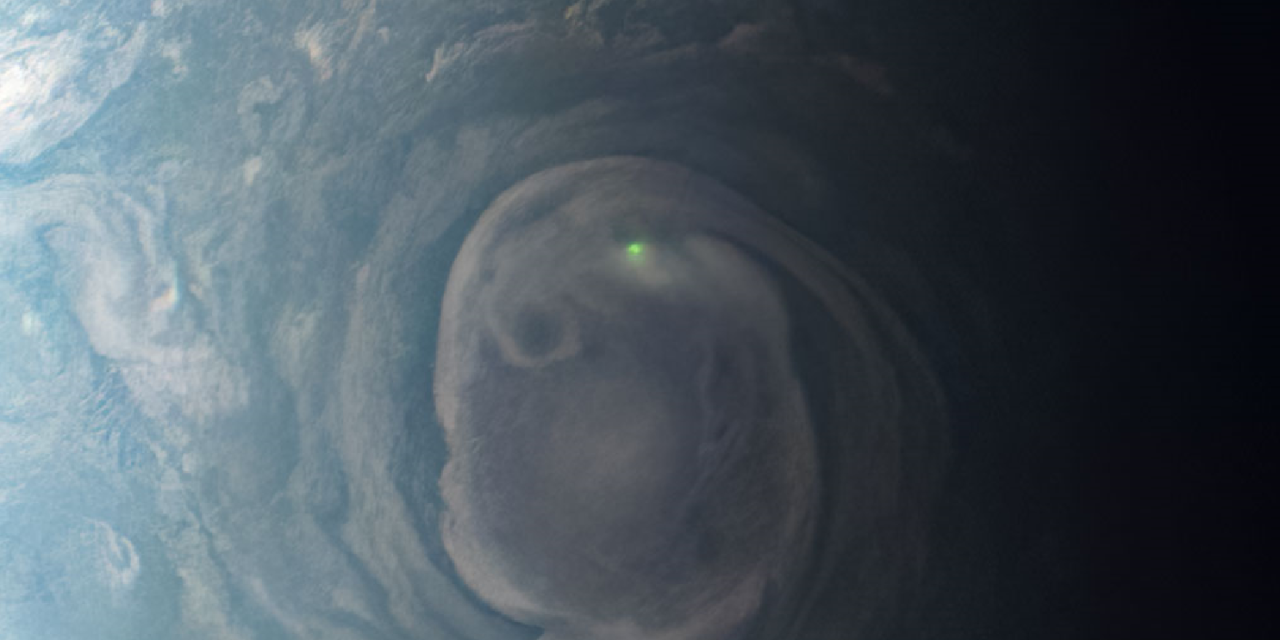Thunderstorm on Jupiter

NASA/JPL-Caltech/SwRI/MSSS for data, Kevin M. Gill for processing
Jupiter's connection with lightning goes beyond mythology. Recently, NASA's Juno probe captured a striking image revealing a lightning bolt amidst the dense cloud cover of the largest planet in our Solar System.
Unlike Earth, where lightning is predominantly associated with water-containing clouds near the equator, Jupiter experiences lightning in clouds with a mixture of water and ammonia, particularly near its polar regions.
In the upcoming months, as Juno continues its close flybys of Jupiter, especially during its nighttime side, further observations of thunderstorm activity will be made.
This particular photo was taken during Juno's 31st flyby of Jupiter using the JunoCam instrument. The probe was approximately 32,000 kilometers above the planet's clouds, near a latitude of 78 degrees. The image was processed by Kevin M. Gill, as part of a citizen science project involving dedicated volunteers collaborating on photo processing.
Recent research published in Nature Communications has focused on studying the processes behind lightning strikes on Jupiter, shedding light on their triggering mechanisms.
Launched on August 5, 2011, Juno entered Jupiter's orbit on July 5, 2016, initiating its scientific mission to uncover the planet's origin and evolution. The mission benefits from significant contributions, including the Jiram radio science instrument spectrometer from the Italian Space Agency and the KaT (Ka-Band Translator) developed by Thales Alenia Space-Italia and the University of Rome "La Sapienza."
The image, showcasing JunoCam's depiction of a lightning strike on Jupiter, captures the awe-inspiring phenomenon on the gas giant. (Image credits: NASA/JPL-Caltech/SwRI/MSSS for data, Kevin M. Gill for processing, CC BY)
Comments
Post a Comment